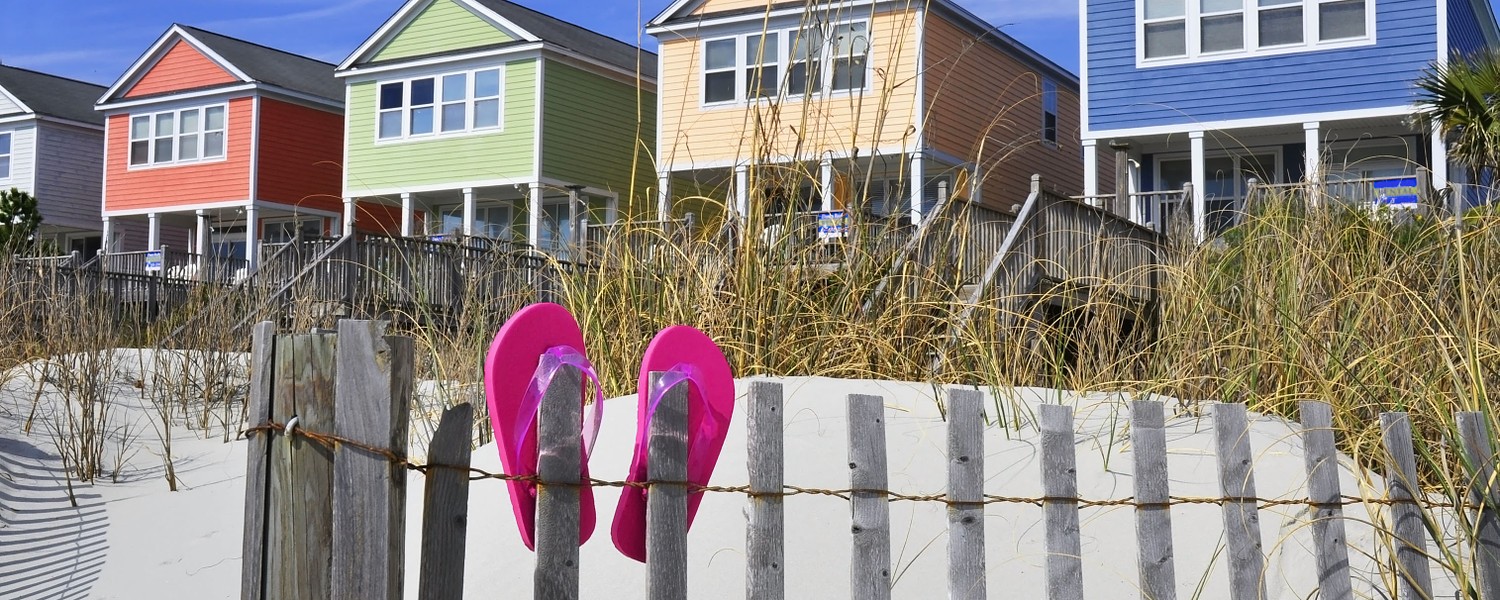
Provided by:
StacieStauffSmith Photos / Shutterstock.com

Our travel guides are free to read and explore online. If you want to get your own copy, the full travel guide for this destination is available to you offline* to bring along anywhere or print for your trip.
*this will be downloaded as a PDF.Price
€4,95
The City
The guide was updated:
Myrtle Beach's economy is built almost entirely on tourism, which brings around 14 million visitors to the area each year, in addition to millions of dollars. With a subtropical climate and average highs in the mid-80s to low-90s (ºF), who wouldn't want to spend the day in the sun playing on the beach? The city of Myrtle Beach, South Carolina was incorporated in 1957, but, from a tourism standpoint, North Myrtle Beach, Atlantic Beach, Surfside Beach, Garden City Beach, Murrells Inlet, Litchfield Beach, Pawleys Island, Little River, Loris, Aynor, and Conway are all considered part of the Myrtle Beach region. Myrtle Beach is the main city located on the Grand Strand, a stretch of beaches that extends over 60 miles over the South Carolina coastline.
The area was once inhabited by Waccamaw Indians, but little is known about their lives prior to European settlement. After European colonization, the area that is now Myrtle Beach was pretty much uninhabited until after the Revolutionary War. Even then, only a few families who had land holdings set up residences here. It was not until the turn of the 20th century that tourist development began. In 1901, the Burroughs & Collins Company opened the Seaside Inn, the first hotel of the beach community that was then called simply, "New Town." It was later renamed "Myrtle Beach" by founder Burroughs' wife after the Southern Wax Myrtle, a shrub that is abundant in the area.
The area continued to develop into the vacation hot spot recognized by tourists around the world today, and no expense has been spared to make sure that anyone who visits Myrtle Beach will want to come back time and time again. There is a multitude of things to do, aside from relaxing on the beach, to occupy your time. Myrtle Beach's attractions include the Myrtle Beach Boardwalk, Myrtle Waves water park, Family Kingdom Amusement Park, The Carolina Opry, and a multitude of annual events hosted each year at the Myrtle Beach Convention Center. Myrtle Beach is also home to over 1,900 restaurants, approximately 460 hotels, and 100 golf courses, giving it the distinction by some of the "Golf Capital of the World."
The area was once inhabited by Waccamaw Indians, but little is known about their lives prior to European settlement. After European colonization, the area that is now Myrtle Beach was pretty much uninhabited until after the Revolutionary War. Even then, only a few families who had land holdings set up residences here. It was not until the turn of the 20th century that tourist development began. In 1901, the Burroughs & Collins Company opened the Seaside Inn, the first hotel of the beach community that was then called simply, "New Town." It was later renamed "Myrtle Beach" by founder Burroughs' wife after the Southern Wax Myrtle, a shrub that is abundant in the area.
The area continued to develop into the vacation hot spot recognized by tourists around the world today, and no expense has been spared to make sure that anyone who visits Myrtle Beach will want to come back time and time again. There is a multitude of things to do, aside from relaxing on the beach, to occupy your time. Myrtle Beach's attractions include the Myrtle Beach Boardwalk, Myrtle Waves water park, Family Kingdom Amusement Park, The Carolina Opry, and a multitude of annual events hosted each year at the Myrtle Beach Convention Center. Myrtle Beach is also home to over 1,900 restaurants, approximately 460 hotels, and 100 golf courses, giving it the distinction by some of the "Golf Capital of the World."


